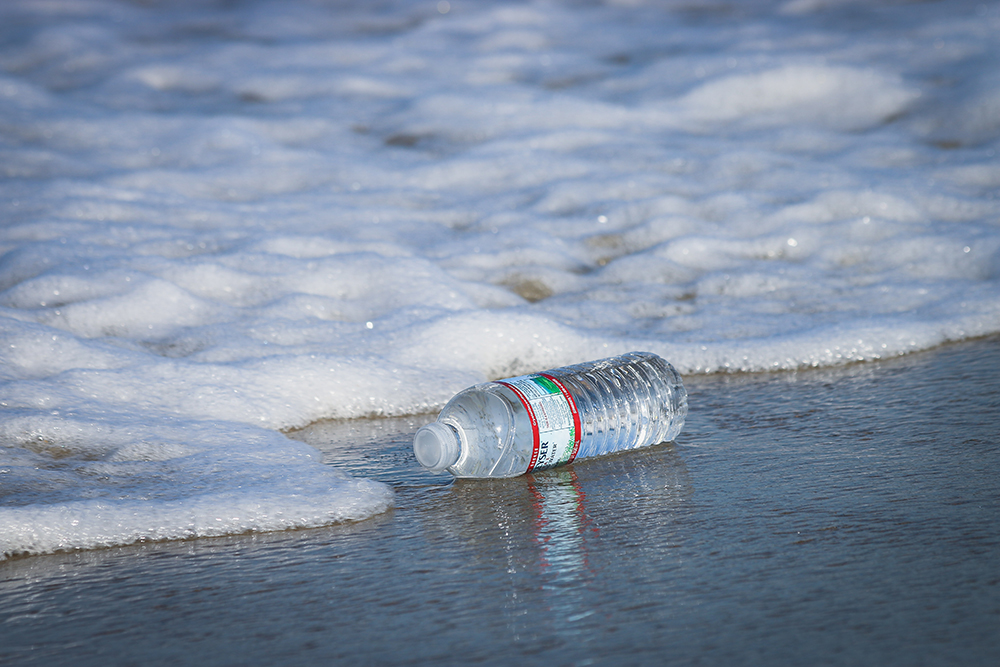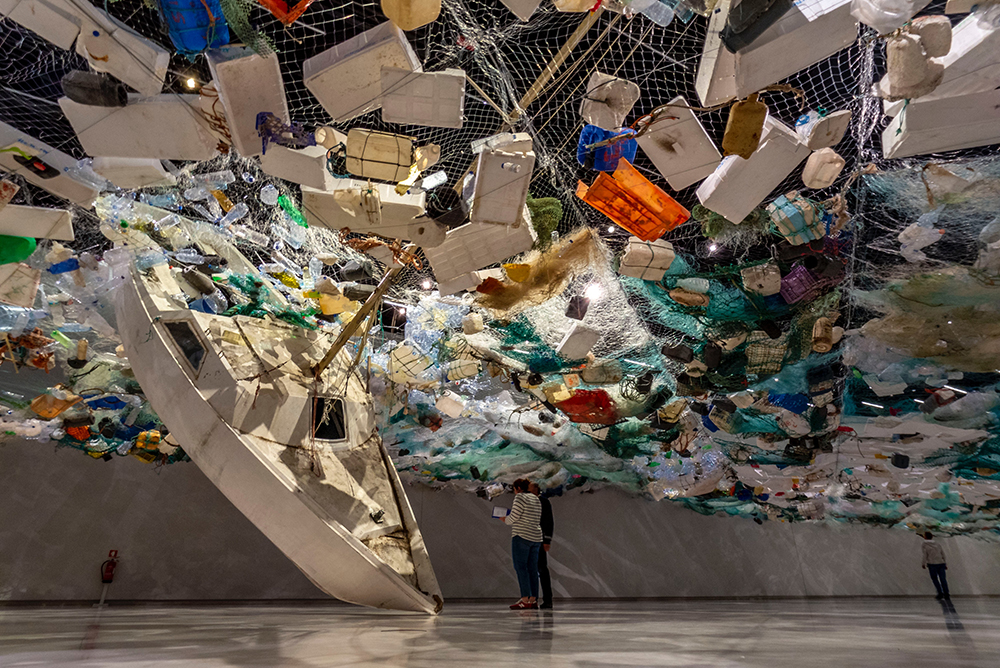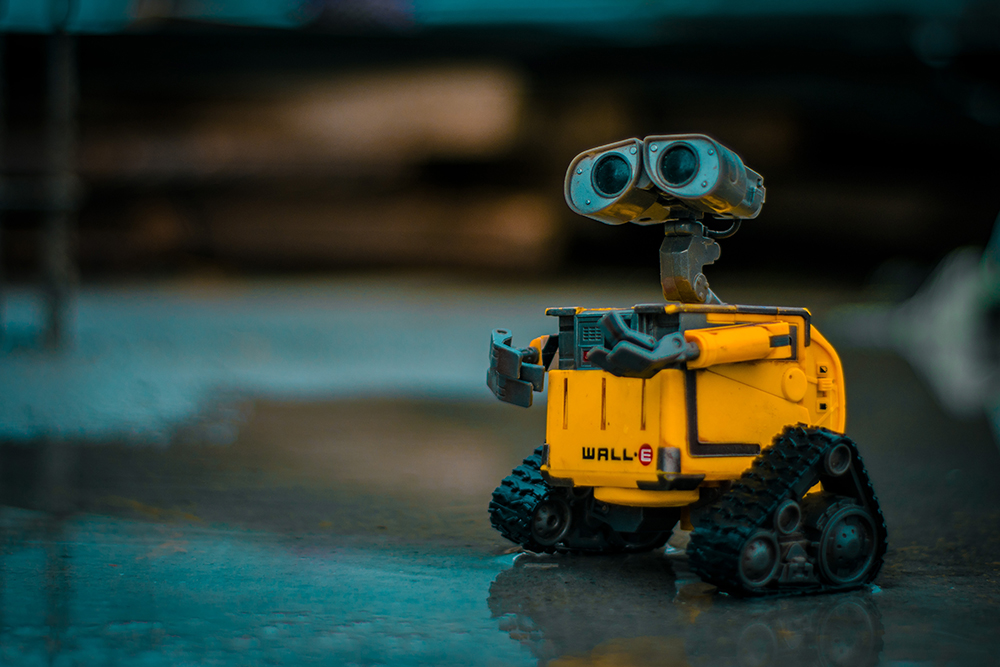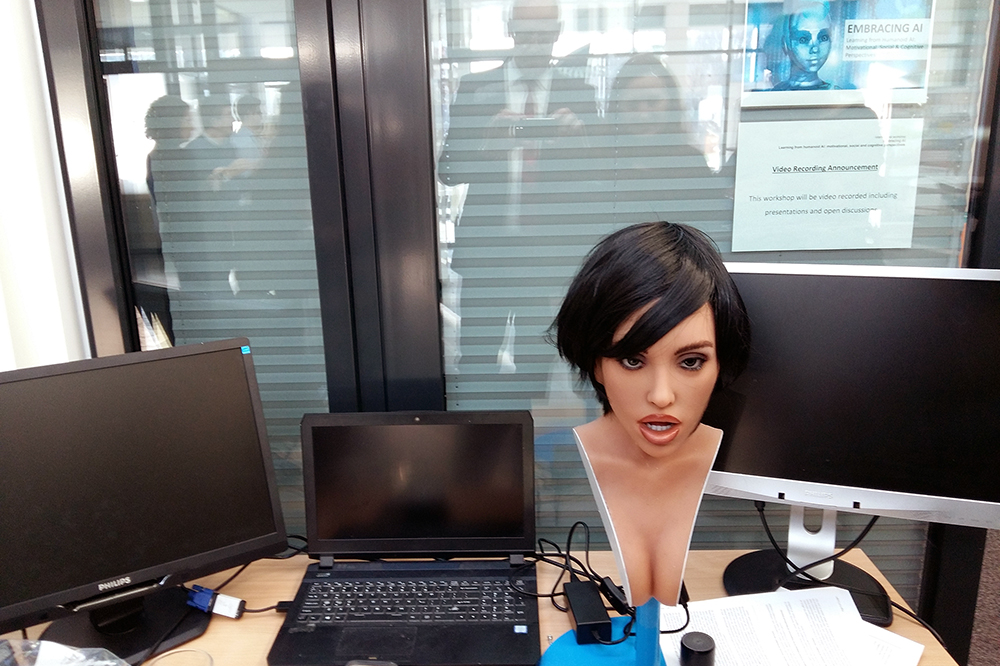The book chapter “The BESTBOT Project” by Oliver Bendel, David Studer and Bradley Richards was published on 31 December 2019. It is part of the 2nd edition of the “Handbuch Maschinenethik”, edited by Oliver Bendel. From the abstract: “The young discipline of machine ethics both studies and creates moral (or immoral) machines. The BESTBOT is a chatbot that recognizes problems and conditions of the user with the help of text analysis and facial recognition and reacts morally to them. It can be seen as a moral machine with some immoral implications. The BESTBOT has two direct predecessor projects, the GOODBOT and the LIEBOT. Both had room for improvement and advancement; thus, the BESTBOT project used their findings as a basis for its development and realization. Text analysis and facial recognition in combination with emotion recognition have proven to be powerful tools for problem identification and are part of the new prototype. The BESTBOT enriches machine ethics as a discipline and can solve problems in practice. At the same time, with new solutions of this kind come new problems, especially with regard to privacy and informational autonomy, which information ethics must deal with.” (Abstract) The book chapter can be downloaded from link.springer.com/referenceworkentry/10.1007/978-3-658-17484-2_32-1.
Towards an Anti Face
Face recognition in public spaces is a threat to freedom. You can defend yourself with masks or with counter-technologies. Even make-up is a possibility. Adam Harvey demonstrated this in the context of the CV Dazzle project at the hacker congress 36C3 in Leipzig. As Heise reports, he uses biological characteristics such as face color, symmetry and shadows and modifies them until they seem unnatural to algorithms. The result, according to Adam Harvey, is an “anti face”. The style tips for reclaiming privacy could be useful in Hong Kong, where face recognition is widespread and used against freedom fighters. Further information can be found on the CV Dazzle website. “CV Dazzle explores how fashion can be used as camouflage from face-detection technology, the first step in automated face recognition.” (Website CV Dazzle)
The Comeback of Cozmo
According to The Robot Report, Anki’s little robots might be making a comeback. Digital Dream Labs in Pittsburgh acquired the patents, trademarks, and domain. The start-up company “is planning to revive and manufacture more units of each product in the following order: Overdrive, Cozmo, Vector” (The Robot Report, 26 December 2019). Digital Dream Labs founder H. Jacob Hanchar told The Robot Report “the goal is to have all three products available for purchase for Christmas 2020” (The Robot Report, 26 December 2019). The small robots belong to the best that the industry has produced. What is special about Cozmo is the many emotions it can show (but of course doesn’t have). It also has face recognition and a night vision device. The future of it and its siblings is not yet clear, as Digital Dream Labs has not purchased “physical assets and inventory” (The Robot Report, 26 December 2019). Fans are waiting and hoping.
Robots against Plastic Waste
WasteShark is a remotely controlled robot by Ranmarine Technologies that collects plastics from the surface of lakes and oceans. “Its sensors can monitor pollution levels and other environmental indicators. It is electrically powered, emission-free and can collect hundreds of kilos of rubbish at a time.” (Euronews, 15 December 2019) According to Euronews, Richard Hardiman, the founder of the start-up-company, said: “What we’re trying to do is create a small enough vessel that will get into tight spaces where waste collects, particularly in the harbours and the ports, and stop all that waste being taken out into the greater ocean.” (Euronews, 15 December 2019) The project received support from the European funds allocated to making plastic circular. An overview of the most important projects against plastic waste in water can be found here.
Care Robots with Sexual Assistance Functions
In his lecture at the Orient-Institut Istanbul on 18 December 2019, Oliver Bendel dealt with care robots as well as therapy and surgery robots. He presented well-known and less known examples and clarified the goals, tasks and characteristics of these service robots in the healthcare sector. Afterwards he investigates current and future functions of care robots, including sexual assistance functions. Against this background, the lecture considered both the perspective of information ethics and machine ethics. In the end, it became clear which robot types and prototypes or products are available in healthcare, which purposes they fulfil, which functions they assume, how the healthcare system changes through their use and which implications and consequences this has for the individual and society. The lecture took place within the series “Human, medicine and society: past, present and future encounters” … The Orient-Institut Istanbul is a turkological and regional scientific research institute in the association of the Max Weber Foundation. In close cooperation with Turkish and international scientists, it dedicates itself to a multitude of different research areas. More information via www.oiist.org.
Towards Self-replicating Machines
In recent decades, there have been several attempts to supplement traditional electronic storage media. 3D codes with color as the third dimension are an interesting approach. They can be applied to paper or film, for example. Another approach has now been presented by researchers from Switzerland and Israel. They are able to generate artificial DNA and place it in any object. From the Abstract: “We devised a ‘DNA-of-things’ (DoT) storage architecture to produce materials with immutable memory. In a DoT framework, DNA molecules record the data, and these molecules are then encapsulated in nanometer silica beads, which are fused into various materials that are used to print or cast objects in any shape. First, we applied DoT to three-dimensionally print a Stanford Bunny that contained a 45 kB digital DNA blueprint for its synthesis. We synthesized five generations of the bunny, each from the memory of the previous generation without additional DNA synthesis or degradation of information. … DoT could be applied to store electronic health records in medical implants, to hide data in everyday objects (steganography) and to manufacture objects containing their own blueprint. It may also facilitate the development of self-replicating machines.” (Abstract) The approach could also be interesting for robots. They could, for example, reproduce themselves on Mars. The article with the title “A DNA-of-things storage architecture to create materials with embedded memory” has been published in NATURE BIOTECHNOLOGY and can be accessed via www.nature.com/articles/s41587-019-0356-z.epdf.
The Ocean Cleanup’s First Results
As Golem reported on 13 December 2019, The Ocean Cleanup project has landed 60 large bags of plastic waste. The plastic waste comes from the Pacific, where several areas are heavily affected. In October, the project managers announced that the 001/B system was working as planned. System 001 had to be reworked because the plastic collected in it but then spilled out again. Now garbage of all sizes was found, from huge nets to household garbage such as car tires or plastic bottles to microplastic. The plastic is now to be recycled – so founder Boyant Slant is quoted by Golem. The goal is to create sustainable products. In a final thesis at the University of Applied Sciences and Arts Northwestern Switzerland a student recently described and evaluated six projects for the disposal of plastic waste in seas. An overview can be found here. The Ocean Cleanup was also discussed, beside the WasteShark that sticks out as a robot.
A Garbage Robot for Space
According to Tages-Anzeiger (9 December 2019), a consortium led by a Swiss start-up named Clearspace has won a ESA competition and was awarded the contract for a waste disposal mission in orbit. The so-called “chaser” of the EPFL spin-off has four robotic arms with which a remnant of the ESA launch vehicle Vega is to be captured and drawn. Chaser and the part of Vespa will then burn up together in the atmosphere. Later, the company wants to look for new targets. According to Luc Piguet, the issue of space debris is more urgent than ever. The founder and CEO of Clearspace says that there are currently almost 2,000 active and 3,000 inactive satellites. The problem is likely to worsen over the next few years. Where people roam, the mountains of rubbish grow and space fills with rubbish. This may sound literary, but above all, it’s terrible. Robots could be a solution both on Earth and in orbit.
Jealousy 4.0
The international workshop “Learning from Humanoid AI: Motivational, Social & Cognitive Perspectives” took place from 30 November – 1 December 2019 at the University of Potsdam. Dr. Jessica Szczuka raised the question: “What do men and women see in sex robots?” … Her talk was based on the paper “Jealousy 4.0? An empirical study on jealousy-related discomfort of women evoked by other women and gynoid robots” by herself and Nicole Krämer. In their introduction the authors write: “In a paper discussing machine ethics, Bendel asked whether it is ‘possible to be unfaithful to the human love partner with a sex robot, and can a man or a woman be jealous because of the robot’s other love affairs?’ … In this line, the present study aims to empirically investigate whether women perceive robots as potential competitors to their relationship in the same way as they perceive other women to be so. As the degree of human-likeness of robots contributes to the similarity between female-looking robots and women, we additionally investigated differences between machine-like female-looking robots and human-like female-looking robots with respect to their ability to evoke jealousy-related discomfort.” (Paper) The paper can be accessed here.








